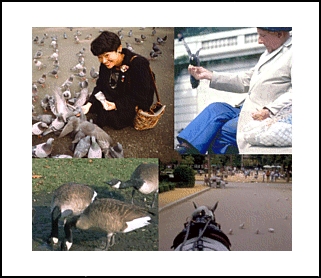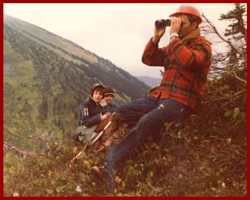 Of all the things we may associate with the city – good or bad – wildlife is not something that generally comes to mind. Culture, accessibility, nightlife; smog, noise and clamour: these are the things of the city, the images conjured up by the word “?urban’. But to a select few people, every aspect of the urban environment is a clue to the ways in which wildlife has come to co-exist with humans in our most dense settlements. A ravine is not merely a place for a pleasant Sunday walk. It is a vital corridor along which urban wildlife can safely travel from one greenspace to another. It is a rare habitat for city animals otherwise relegated to human-dominated spaces such as open parks and backyards.
Of all the things we may associate with the city – good or bad – wildlife is not something that generally comes to mind. Culture, accessibility, nightlife; smog, noise and clamour: these are the things of the city, the images conjured up by the word “?urban’. But to a select few people, every aspect of the urban environment is a clue to the ways in which wildlife has come to co-exist with humans in our most dense settlements. A ravine is not merely a place for a pleasant Sunday walk. It is a vital corridor along which urban wildlife can safely travel from one greenspace to another. It is a rare habitat for city animals otherwise relegated to human-dominated spaces such as open parks and backyards.
To the wildlife-savvy, a poorly-secured garbage can is not just an eyesore (or “nose-sore”, as the case may be). Rather, it represents a call to the dinner table for wildlife that must take advantage of foraging opportunities when they arise. An old and worn verandah in need of a little TLC is not so much a charming example of architectural styles gone by as an outright invitation for urban critters to move right on in.
To the people involved in caring for those animals that fare poorly in the concrete jungle, the city also offers a million clues as to what can – and does – go wrong in human-wildlife interactions. Urban wildlife rehabilitation centres care for patients with a shocking array of ailments. Common at these centres is the kinglet, dazed and damaged after its collision with the windows of a downtown building – so deceivingly disguised as sky to the hapless little bird. Too often do rehabbers treat a young raccoon with a beverage lid caught so tight round his wrist that circulation to the hand is all but completely cut off. From birds to mammals, butterflies to salamanders, urban wildlife live a precarious existence. What is one day food is the next a potentially fatal carrier of disease. What at first appears to be a perfect home – an attic with so small a hole as to protect one’s babies from any menacing predator – is soon transformed into a nightmare for both disturbed home-owner and for separated mother and baby wildlife when that perfect hole is blocked off.
To some, urban wildlife rehabilitation could seem an exercise in frustration. Is it not the elements of the city, the very structures and functions that make cities what they are, that lead to wildlife illness and injury? Does caring for these creatures not just represent an attempt to care for the few in an inevitably endless stream of the many injured, ill and orphaned wildlife that the city machine will churn out?
To those at the heart of caring for these animals, the answer is of a much more hopeful nature. Each problem has its solution, and each human-wildlife encounter can be transformed from a potentially negative experience into a wildlife rehabilitator’s dream: an educational experience. While the urban environment does pose an astonishingly long list of hazards for wildlife, it also represents a unique learning opportunity. Although the city may seem as far removed from wilderness as it is possible to be, the urban environment is in fact a forum in which much human-nature interaction takes place. And where there is interaction, there is an opportunity for learning.
Ask any urban wildlife rehabber his or her hopes for the future. To not find one more orphaned squirrel? To never again see an oiled waterbird, ill from preening not its natural waterproofing, but a toxic foreign substance? Surely, these hopes and many more would top the wish-list of any urban wildlife care specialist. But more than this, beyond the practicalities of dealing with actual animal injuries and illness, is a goal that is more social science than veterinary science. To many, the primary aim of wildlife rehabilitation in urban areas is to transform the relationship between city dwellers of the human sort and those of the furred and feathered variety. It is hoped that by helping people to discover the ways in which our actions and choices negatively impact on urban wildlife, and by sharing the surprisingly simple ways of avoiding such impacts, urban wildlife rehabilitators will allow for the sharing of a settlement type more and more of us now call home: the modern city.
For more information on wildlife rehabilitation – urban and otherwise – check out the following websites:
National Wildlife Rehabilitators Association: http://www.nwrawildlife.org
International Wildlife Rehabilitation Council: http://www.iwrc-online.org
Zoe Dalton is a graduate of York University’s environmental science program, and is currently enjoying working towards a Master of Arts in Integrated Studies with Athabasca U. She can be reached for comments or questions at zk_dalton@hotmail.com.

